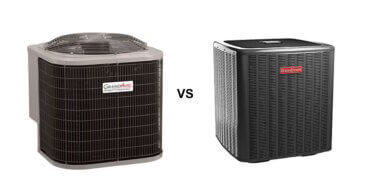Whole-house fans are nothing new and have been around for some time now. It is its energy savings benefits over using an AC that led to its recent increased popularity.
These fans offer an entire house cooling concept, thus making an excellent air conditioner substitute in most climates most of the year. Along with the ceiling and other circulating fans, they keep families comfortable even in hot summer weather.
You can even modify your central heating and cooling system ducts to provide whole-house cooling.
Of course, like most appliances, in addition to its many benefits, whole-house fans also have their share of disadvantages. We here share the various pros and cons of a whole-house fan.

How Do Whole-House Fans Work?
Whole-house fans work best in the center of your homes’ highest level. This point is typically in the ceiling that separates your living space from your attic. It works by pulling in cooler outside air through open windows and expelling hot air through the loft and roof.
This air circulation process thus provides for optimal attic ventilation along with house cooling.
You can operate these fans with a switch. Using it when it is the coolest like at night or dusk, gives the best results and cooling effects.
What Is The Perfect Climate To Use The Fan?
Whole-house fans are ideal for use in homes located in areas witnessing a vast temperature difference overnight. Examples are places that have a dry and cool climate.
What Are Whole-House Fan Pros?
Whole house fans come with numerous benefits:
- The most significant advantage of a whole-house fan, is its reduced energy consumption compared to an AC. This leads to lower energy bills which prove especially useful in hot summer months.
- Besides, these fans quickly cool your home. They take only a few minutes to cool your house by expelling warm air and bringing in cool air. The exact time required depends on your house size where smaller homes cool quicker than bigger ones.
- Most importantly, whole-house fans use only 10% of your AC system’s energy. And unlike an air conditioner that recycles stale indoor air, whole-house fans keep your home fresh with air from outside.
- Conversely, the fresh air makes whole-house fans an eco-friendly cooling option. Eco-friendly homes always bring in an increased home value.
- Last but not least, these fans do not require much maintenance, like periodically changing air-conditioner filters. You don’t even have many expensive AC repair costs to pay, nor use many chemicals.
What Are The Disadvantages Of Whole-House Fans?
Whole-house fans also have their share of cons:
- While these fans reduce your cooling bills, they can lead to higher heating bills in winter. The chances are higher with older whole-house fans, which quickly let out the hot air that heats your home in winter.
- The fans may not be ideal if you have allergies because you need to keep windows open to pull in cooler air.
- You have to keep the windows closed when not in use, to prevent the entry of warm air into your home.
- Besides, the exterior air is usually not that cool in humid conditions. A whole-house fan thus ends up bringing the humidity into your house.
- The most common complaint of whole-house fans is its noise. That’s especially evident in older models.
Do Whole-House Fans Really Work?
Yes, whole-house fans are the perfect AC alternative for most people who live in climates with vast temperature differences at night. They keep your home cool while consuming less energy than air conditioners.
You may notice a drop in cooling efficiency after using your fan after a few years.
In this case, you can improve its working efficiency by replacing your older model fan with a new and more efficient fan. It’s better if the fan comes with an insulation cover and airtight seal.
How Long Should I Run a Whole-House Fan?
There is no fixed answer to the question because it depends on your home size and how many rooms you need to cool.
Generally, your home cools pretty well if you run the whole-house fan an hour every night before sleeping. You can, of course, set and use the fan timer for two hours on scorching days.
Related article: How Long Can You Run A Portable Air Conditioner?
How To Use Your Duct System Like a Whole House Fan
Did you know that you may be able to use your home’s heating and air conditioning ducts for whole-house ventilation? However, you need to install an intake duct to pull air into the attic-mounted system and direct it to your heating and cooling ducts.
A damper also helps to control the exhaust home air into the attic effectively.
When Doesn’t a Whole-House Fan Make Sense?
There are some situations where using whole-house fans doesn’t make much sense.
- Using a whole-house fan may not be wise if you live near polluted spots like a freeway or coal plant. As there is no filter on the fan, the surrounding polluted air easily enters your home while cooling it.
- These fans may also not work in hot places like the South of Florida. There’s not much difference in the atmospheric temperature at night. As whole-house fans cool your home best at night, they may not work efficiently in these atmospheric conditions.
- It’s better to avoid using whole-house fans if you have a fireplace, gas furnace, or similar gas appliance at home. You may have to get rid of your gas appliances before installing the fan.
Still, wondering if whole-house fans are suitable for your home despite this list of pros and cons? Consider discussing these points with a local professional.
Related article: Fan vs Ac Cost: What Is Cheaper?





Leave a Comment